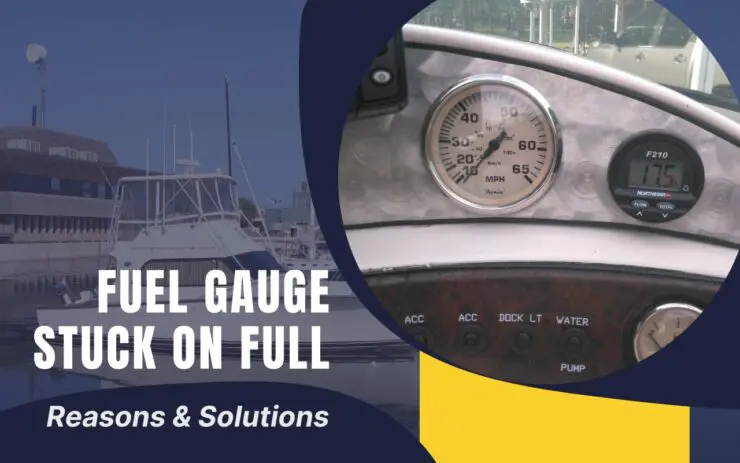You’ve been driving your boat around for over an hour. Suddenly, you notice your fuel gauge stuck on full. It hasn’t gone down even a millimeter since you last took fuel.
So, the question is, why is your boat fuel gauge stuck on full?
The problem could be among three things. The ground to the battery and 12V Direct Current power could be causing issues. The sensing wire that comes from the sender in the fuel tank could also malfunction. There could also be a power loss in the gauge or the sender.
The problem is obviously among the 3 things mentioned. However, identifying them wouldn’t be so hard.
Now, without further ado, let’s dig right in.
Table of Contents
ToggleWhy Is The Boat Fuel Gauge Stuck on Full?
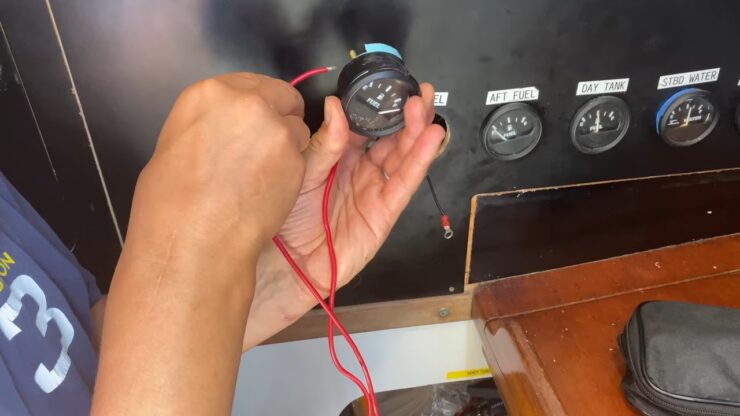
You need to start by ensuring that your fuel gauge is working properly or not. The analog fuel gauges work by measuring resistance.
The fuel sender supplies a particular amount of electricity to the gauge. This voltage is then used by the gauge to determine the position of the needle on the gauge.
Read along to find out more about the possible problems and their solutions.
Also read: Best Kicker Motor Bracket
1. The Gauge Is Not Functioning Properly
Testing your analog fuel gauge is quite easy and should take no more than a few minutes. You can use a voltage meter or external wiring to troubleshoot. You can use the meter to test for continuity out from the battery ground towards the ground pin on the rear of the gauge.
You may check off the ground problem to the gauge if you find a solid ground linked to the ground to the fuel tank.
Sometimes, this could create problems in your Mercury verado. If you can’t find the problem anywhere, you should get your verado checked out.
Solution
Look for 12V power on the gauge’s power post. Normally, it will be connected to the other gauges’ power posts. When the key switch is turned on, it receives electricity. When you connect the 12V power to the sending unit, the fuel gauge should jump directly to full.
After the sending wire is removed, if the gauge remains full. Then the gauge has a fault and will need to be replaced.
If the needle drops to empty after disconnecting, your fuel gauge is fine.
If the problem is in your gauge, afraid there’s nothing you can do. You’ll have to replace that fuel gauge with a new one.
2. Damaged Ground Wire
The ground wire can be damaged due to wear and tear at any given time.
To check if it’s alright, use wire to run electricity through the battery’s ground to the rear of the fuel gauge.
This gives us a reliable power source.
Solution
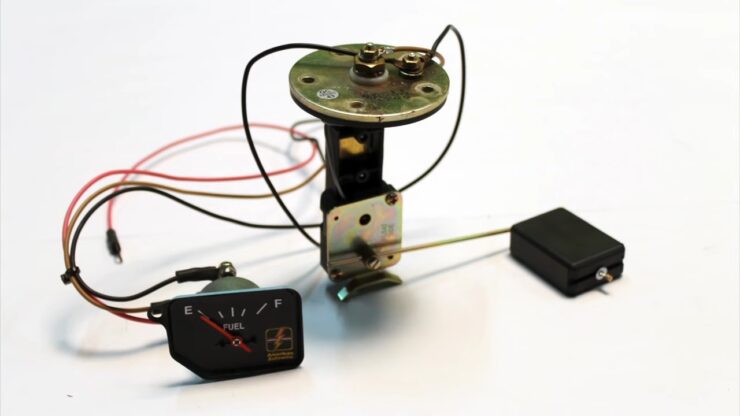
Connect a piece of wire between the 12V battery’s power post and the gauge’s power post.
Now, do the same with the jumper as you did while testing the gauge. The needle of the gauge should be maxed out. Disconnect the power and the gauge will read empty.
If things work out just the way I just told you, then there’s nothing wrong with your ground. The problem is somewhere else then.
But if the ground cables are damaged, you’ll have to replace them.
3. Faulty Sending Unit Wiring
Wait before you pull out the sending unit. You should check whether the wiring of the sending unit and fuel tank is functioning or not.
Conduct a continuity analysis from the tank’s ground to the battery’s ground. Run a length of wire from the ground of the battery to the tank. Test the gauge for too much resistance.
Solution
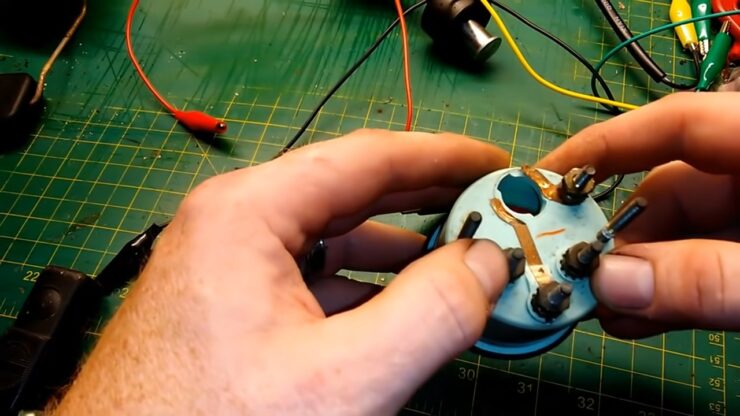
The sending wire is the pink one. Remove the ground from the sender. Then check for continuity from the gauge back to the sender. If you find too much resistance, run a wire from the sender. It will connect to the gauge.
Turn the key on and check if the reading is right or not. If not, then your wires are damaged. But if the readings are right, you have a broken sending unit.
You can just change out the wires if they’re faulty.
Also read: Mercury 150 Four Stroke Problems
4. Broken Fuel Sender
A sending unit just measures the amount of fuel in a tank. And they can be hard to find at times.
You might even have to make a hole in the deck to find them.
While looking for the sender, you might come across an oil leakage in your fuel tank. And if you do notice any leak, you can always repair it.
Be very careful while removing the sending unit. Since you’re going to reinstall it, you can’t get it damaged. Keep track of which way the wires face when you take it out. You’ll need that information when you reinstall the sender.
Don’t push too hard on the screws. And use penetrating oil if they’re stuck.
Did you face problems like the sender was stuck in a vacuum? Does the same thing happen when you try to open the nozzle of your tank? Then it’s a gas tank venting issue. You can solve this easily.
Solution
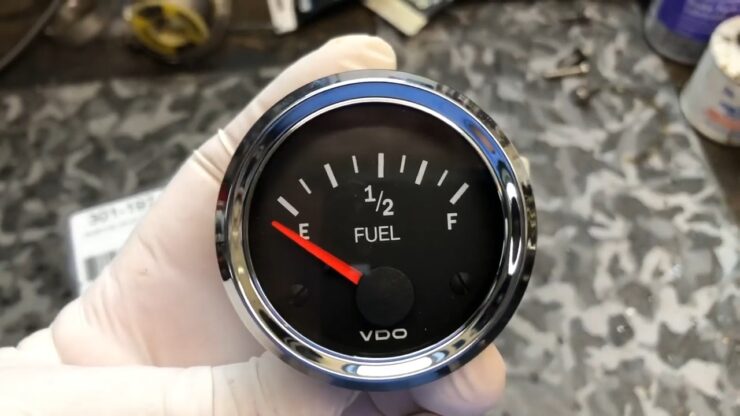
Let’s inspect the fuel sender once it’s been removed before replacing it. Connect a meter to the sender’s two wires. Slowly move the float from the base to the tip while the meter is in continuous mode.
You should witness a shift in resistance and a constant rise. If the resistance does not change or is set to a certain level. The sender has stopped working and needs to be replaced. It’s time to get a new one installed.
Before you go off to buy a new sender, you must measure the length of the tank first. Take a measuring tape and take the length of the tank.
Leave an inch out of that number. That should be the length of the sender that you should buy. This lets you drive that extra distance even after your gauge hits empty.
Fuel senders usually go in a certain way. If you remember the directions the wires were facing when you take out the sender, then that’ll be your hint.
You should look for some of the Best Propeller For Mercruiser 3.0 Alpha One.
5. Testing the Fuel Sender and Tank Ground
If you find that your boat’s fuel gauge is stuck on “full” even after you’ve filled the tank, there may be a problem with your fuel sender. To test whether this is the case, first remove the fuel sender unit from the fuel line connecting it to the engine.
Next, connect a voltmeter between one of the black terminals on the sender unit and the ground (a screw or bolt head will work fine). If the voltage is above 12 volts, then the sender is good and needs no replacement. If the voltage is below 12 volts, then the sender needs to be replaced.
Solution
If your boat’s fuel gauge is stuck on full, there are a few things you can do to troubleshoot the issue.
First, make sure the gauge is accurate. If it’s not, the problem may be with the gauge itself or with the fuel sender.
Next, check for blockages in the fuel line. If there are no blockages, then it’s likely that the problem is with the tank ground.
If all of these tests fail to fix the issue, then it may be necessary to replace the fuel sender or gauge assembly.
What Should You Do if the Gauge is Reading Empty All the Time
If your boat’s fuel gauge is reading empty all the time, there are a few things you can do to troubleshoot and fix the issue.
First, make sure that you’re fueling your boat properly. Make sure that you’re using the right fuel type for your engine and that you’re putting the fuel in the right spot on the tank.
Second, check to see if there is a blockage in your fuel line. If there is a blockage, it will prevent the gauge from reading correctly. You can try using a plunger to unblock the line if necessary.
Finally, if all of these steps fail to fix the problem, it might be time to replace your fuel gauge.
FAQs
1. Can I run the same tests if the needle is stuck at empty?
Yes, you can. These tests can be applied to identify the problem if your fuel gauge is stuck at empty.
2. How do I fix a digital fuel gauge?
The process is the same as an analog fuel gauge. At least for most manufacturers. Some manufacturers like Mercury make things differently. Mercury runs their pink wire directly to the engine instead of the gauge. Hence, no touching.
3. Can I ride with a broken sending unit?
Yes, you can. But you might run out of gas due to the wrong reading.
Conclusion
If your boat fuel gauge is stuck on full, it can be quite troublesome. Going through this many tests is a matter of patience.
It’ll be wise of you to follow the tests sequentially.
Let us know which part was the problem for your boat in the comments.
Be sure to let us know if we missed something.
I’m Liam Jackson, the proud owner and driving force behind KayakPaddling.net. Born somewhere in the expansive beauty of the United States, I’ve nurtured a lifelong passion for kayaking and fishing that has led me to explore the far corners of our nation’s waterways.
Related Posts:
- 16 Best Kayak For Beginners 2024 - Kayaking Adventure Gear
- 12 Best Beach Wagons & Carts 2024 - For All-Terrain
- Boat Won’t Go Over 2000 RPM Under Load - Reasons Explained
- How to Charge A Boat Battery on the Water? 2024 - In…
- 20 Best Inshore Spinning Reels 2024 - Capturing All…
- 10 Best Fish Finders Under $200 2024 - Top Affordable Picks

